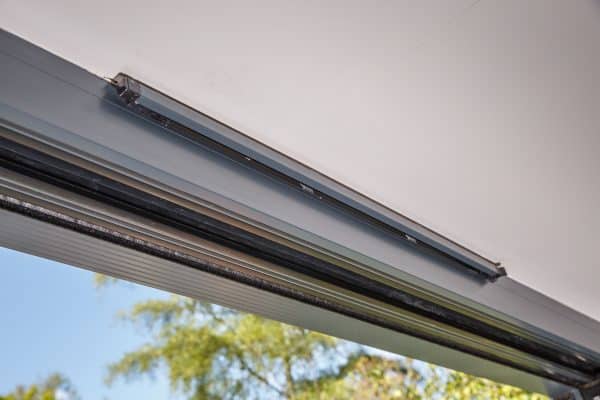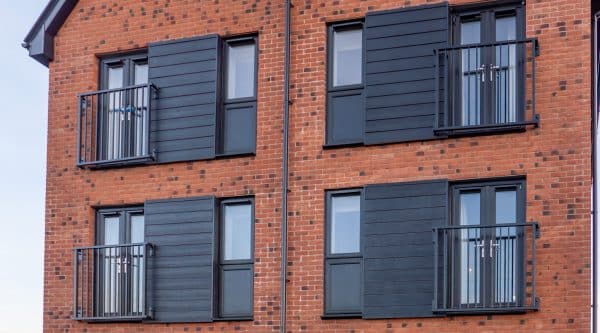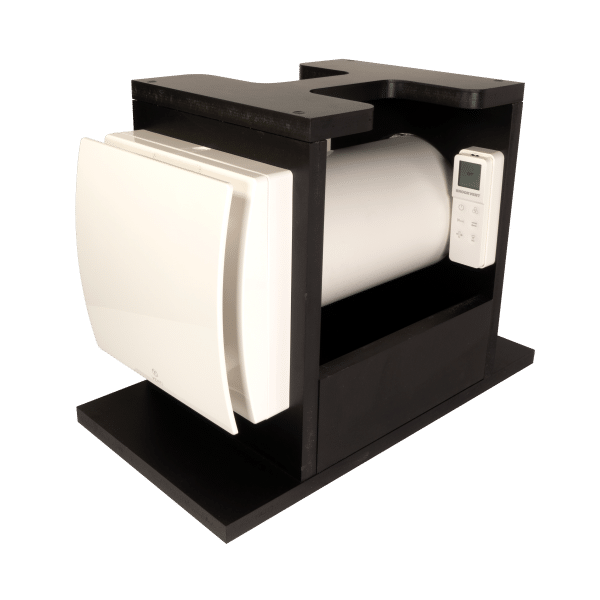If you’re replacing windows, renovating, or building a new home, you’ve likely been told trickle vents are mandatory. They’re not. It is sufficient background ventilation and Part F of Building Regulations that you need to comply with. In other words what you need is adequate ventilation — not a specific product or method.
And while trickle vents remain one way to meet the guidance, they’re not always the most effective, comfortable, or energy-efficient solution. In this article, we clarify where trickle vents sit within Approved Document F, highlight their real-world limitations, and explain the mechanical alternatives now available — including examples like the VENTI range of decentralised units. VENTI is one of several companies offering alternatives to trickle vents. We’ve also reviewed their product range separately for those interested in mechanical ventilation options.
Please read the latest update at the end of this article.
Alternatives to Trickle Vents for your Home Renovation Project
Trickle vents are small, slot-like openings in the head of your window or door frame, designed to allow a small amount of background airflow into a room.
They’ve become standard in many replacement windows as a way to demonstrate compliance with ventilation requirements in Part F of the Building Regulations. But in practice, many homeowners dislike them — and studies have shown that they often underperform in use.

Are Trickle Vents Compulsory?
No. Trickle vents are not compulsory under Approved Document F of the Building Regulations
The regulations require that buildings have a means of providing sufficient background ventilation. In most cases, this means providing an “equivalent area” of background ventilation measured in mm². But the choice of method — trickle vents, mechanical systems, or other strategies — is up to the designer or specifier.
For example:
- 8000mm² equivalent area is typically required for habitable rooms
- 4000mm² for bathrooms or rooms with extractor fans
- If existing windows did not have trickle vents, replacement units must not worsen the ventilation (ADF 2021, para 4.11)
- Trickle vents are a common way to meet these targets, but they’re not the only way.
Why Do Trickle Vents Receive So Much Criticism?
Despite their popularity, trickle vents have a number of well-documented drawbacks — and many window companies now openly question their continued use. Homeowners don’t like them very much either. And what is often the case is that windows in showrooms don’t always show trickle vents.
Whilst they are explained to you, we often hear of people surprised at the sudden increase in the frame size at the top of the their windows. New build homes with uPVC windows, where buyers have no choice in the windows specified by the housebuilders, can look particularly ugly.
This is especially common on slimline sliding doors, which are often shown without trickle vents in showrooms – only for customers to receive doors with visibly bulkier heads to accommodate multiple trickle vents.

- Energy Inefficiency: Trickle vents allow uncontrolled airflow, increasing heat loss and reducing energy performance.
- Air Quality Issues: They don’t filter air, allowing in dust, pollen, noise and pollution.
- User Behaviour: Research shows most people leave them closed, defeating the purpose entirely.
- Minimal Benefit: Even when open, airflow rates are modest at best and often reduced further by poor routing or installation.
What is an MVHR System?
An MVHR (Mechanical Ventilation with Heat Recovery) system is a whole-home ventilation solution that removes stale, humid air and brings in fresh, filtered air from outside.
At the same time, it captures heat from the outgoing air to warm the fresh air coming in. This helps keep indoor air healthy while lowering heating costs.

Trickle Vents vs MVHR – a Side-by-Side-Comparison
Here’s how trickle vents stack up against MVHR mechanical ventilation options like those offered by VENTI:
| Feature / Factor | Trickle Vents | Mechanical Ventilation (e.g. VENTI FLUXO / ARIA) |
|---|---|---|
| Regulatory Compliance | Yes (if equivalent area is met) | Yes (can exceed Part F ventilation requirements) |
| Airflow Control | Uncontrolled, passive | Controlled, automated or programmable |
| Filtration | None | Yes – filters out dust, pollen, and pollutants |
| Noise Insulation | Can increase noise ingress | Operates quietly, no open gaps to outside |
| Energy Efficiency | Allows uncontrolled heat loss | Includes heat recovery (up to 82%) |
| Aesthetic Impact | Breaks window lines | Wall-mounted, discreet design |
| User Behaviour | Often closed, reducing effectiveness | Always on, set-and-forget operation |
| Installation Use Case | Common in retrofit and new build | Increasingly used in both retrofit and new build |
| Cost to Run | No direct cost, but increases heat loss | ~£5 per year per unit (e.g. FLUXO) |
| Maintenance | Minimal, but hard to clean | Filter needs occasional cleaning (tool-free) |
| Lifespan | Exterior component can degrade from external exposure | More durable outside the home |
| Maintenance and Replacement | Often hard to replace due to not knowing model fitted or obsolete since fitting. | Identification of product fitted is easier |
Approved Document F sets out targets for indoor air quality and airflow, but it’s up to designers to decide how to meet them. The key is to demonstrate that the installed solution performs effectively — not just that it ticks a box.
Yet in practice, many installers and manufacturers default to trickle vents because:
- They’re familiar
- They’re easy to price and install
- They’re seen as the path of least resistance with Building Control
- This approach is often referred to as “administrative compliance” — meeting the letter of the law rather than its intention.
MVHR – Better Alternatives to Trickle Vents for your home
Using an VENTI as an example, mechanical ventilation systems offer better control, filtration, and long-term comfort. These include:
- Decentralised MVHR systems like FLUXO or AUREN, offering alternate flow with heat recovery and silent operation
- Continuous mechanical extract units like ARIA, designed for wet rooms to automatically boost airflow when humidity rises
- Centralised MEV systems like UMIDEX, serving multiple rooms from a single unit
These products are already widely used in new-builds, social housing, and increasingly in retrofits — providing more consistent, healthier air quality and better occupant outcomes. Of course, you can use these in your window replacements where the outgoing windows also need to have trickle vents fitted or an alternative solution.
One example of this newer generation of ventilation supplier is VENTI — a UK-based company offering a range of decentralised and centralised systems. While we do not endorse individual brands, VENTI represents the shift towards performance-led ventilation that still complies with Part F but avoids the pitfalls of trickle vents.
For projects involving high airtightness standards, or where noise, energy use, or aesthetics are a concern, systems like FLUXO or ARIA may be worth exploring.

Other Non-Mechanical Alternatives to Trickle Vents
The reality is there aren’t that many and you need to still meet Part F, but aside from MVHR systems, alternatives include:
- Extractor fans
- Open windows
- Passive stack ventilation.
- Windows and Doors designed with less visible trickle vents
If you’ve been told that trickle vents are mandatory, it’s worth getting a second opinion. The regulations require ventilation, not plastic slots in every window.
With modern mechanical solutions now more accessible than ever, you can often achieve better compliance, lower running costs, and a more comfortable living environment — all without compromising your glazing performance. There are now alternatives to trickle vents for new windows and doors.
If you’re unsure what your options are, get in touch today. At the Door and Window Experts Website, we provide impartial, expert guidance to help you make the right choice for your home or project.
Further Reading to Help You
- Document F of Building Regulations
- Building Regulations for Windows and Doors
- U-Values for Windows and Doors
- Buying Windows and Doors online – risks and pitfalls
- Building Regulations and Security or new build homes
Latest Update:
Statement Regarding Recent Ventilation Claims
We’ve recently seen claims circulating online suggesting that trickle vents are the cause of widespread remedial issues across the industry.
The Door and Window Experts Website does not endorse or support these claims.
While it is correct that Part F allows for different methods of achieving ‘adequate ventilation’, the use of trickle vents remains the most common and widely accepted route to compliance.
Suggesting that installers are facing a “wave of callbacks” due to trickle vents is a serious claim—and one that, to date, lacks any published evidence we know of.
Plasterboard staining, oxidisation, and sill damage can result from a wide range of building and installation issues. Blaming trickle vents alone oversimplifies the issue and risks misleading both professionals and homeowners.
We encourage anyone reading such statements to consider the context and motivations behind them—particularly when they come from those promoting alternative systems.
Our goal is to offer balanced, impartial guidance based on real-world use, not marketing agendas.
We continue to support proper ventilation design that meets Building Regulations, considers occupant health, and aligns with manufacturer recommendations.

